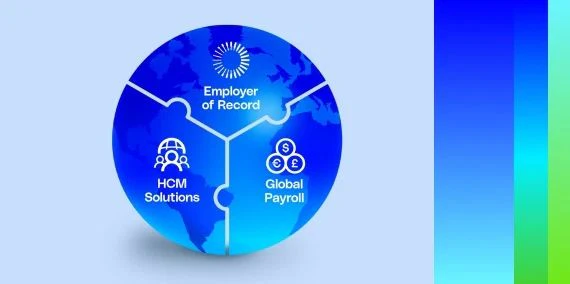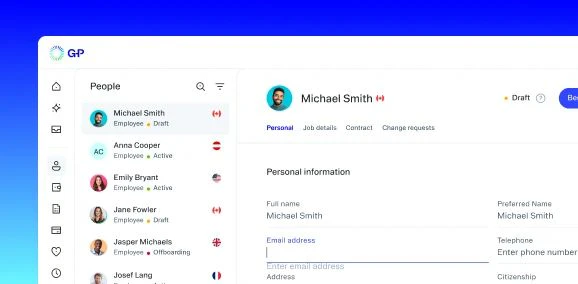Offering competitive compensation and benefits is essential for attracting and retaining top talent in Latvia. While your benefits plan must adhere to the country’s statutory requirements, providing supplemental benefits can set your company apart. Navigating Latvia’s compensation laws is also critical for maintaining compliance.
Managing compensation and benefits alongside hiring and entity setup can be complex and time-consuming. G-P’s Employer of Record solution for Latvia allows you to onboard talent and manage payroll and benefits seamlessly, ensuring compliance without the need to establish a local subsidiary first.
Latvia compensation laws
Understanding compensation regulations is the first step to building a compliant and competitive team in Latvia.
Latvia minimum wage
The minimum wage in Latvia is subject to annual updates. As of January 1, 2025, the national minimum monthly wage for all employees is €740 gross.
It is important to note that specific, higher salary thresholds apply to foreign workers requiring a work permit:
- For a general work permit for non-EU citizens, the minimum salary is tied to the national average gross salary, and this figure is subject to change.
- For an EU Blue Card, which is for highly skilled non-EU employees, the minimum salary is 1.5 times the average gross annual salary in Latvia. For 2024, this threshold was €32,256 annually (or €2,688 per month).
Working hours and overtime in Latvia
The standard workweek in Latvia is 40 hours, based on an 8-hour day, 5 days a week. Overtime work is permitted but regulated. An employee who works overtime is entitled to a premium of at least 100% of their regular hourly or daily wage. Overtime is generally limited to 8 hours in any 7-day period and 144 hours per year.
Statutory benefits in Latvia
All employees in Latvia are entitled to certain statutory benefits. Your benefits plan must include these guarantees.
Public holidays and annual leave
Employees in Latvia are entitled to a paid day off for the country’s 12 public holidays. Additionally, all employees are guaranteed a minimum of 4 weeks of paid annual leave per year.
Sick leave
In the event of illness, an employee is entitled to paid sick leave. The payment structure is as follows:
- Day 1: Unpaid.
- Days 2-10: Paid by the employer. The employer pays at least 75% of the employee’s average earnings for days 2 and 3, and at least 80% for days 4 through 10.
- From Day 11: The State Social Insurance Agency (VSAA) provides sickness benefits at a rate of 80% of the employee’s average insurance contribution wage, for up to 26 weeks.
Maternity, paternity, and parental leave
Latvia provides comprehensive leave entitlements for new parents:
- Maternity leave: Pregnant employees are entitled to 112 calendar days of leave (56 before the birth and 56 after). During this time, the VSAA pays a maternity benefit at 80% of the employee’s average contribution wage, provided they are socially insured.
- Paternity leave: Fathers are entitled to 10 working days of paid leave, which must be taken within 6 months of the child’s birth. This leave is paid by the VSAA.
- Parental leave: After maternity leave, one parent can take parental leave until the child reaches 18 months of age. The VSAA pays a benefit during this period. Additionally, each parent has a non-transferable right to 2 months of parental leave until the child turns 8, in line with EU directives.
Learn more about maternity and maternity leave around the world.
Social security contributions
Employers and employees must contribute to the state social insurance fund, which covers pensions, unemployment, healthcare, and other social benefits. The standard contribution rates are:
- Employer contribution: 23.59%
- Employee contribution: 10.50%
Different rates may apply for specific groups, such as individuals past retirement age or those in special tax regimes.
Designing a competitive benefits plan in Latvia
While statutory benefits are mandatory, offering additional perks is key to attracting and retaining top talent. To create a competitive package, employers should consider market standards and employee expectations.
Common supplemental benefits in Latvia include:
- Private health insurance to supplement state-provided care
- Contributions to a private pension plan
- Company car or transportation allowance
- Bonuses and performance-based incentives
To design an effective plan, you should first establish a budget based on your company’s revenue. Researching what competing companies in your industry offer can provide valuable insight into local market expectations. This will help you allocate your budget effectively, covering mandatory benefits first and then adding perks that provide the most value to your employees.
Taxation of benefits in Latvia
In general, most benefits and compensation provided to an employee are considered part of their taxable income. Benefits-in-kind, such as a company car for private use or private health insurance premiums above a certain threshold, are typically taxed at their market value.
Partner with G-P to build your global team
With G-P — the #1 Rated Global Employment Platform — you can offer global employees local, competitive benefits that are continuously updated by our in-house experts to meet country-specific regulations and norms. Easily administer benefits plans through our EOR platform to provide a smooth employee experience.
Learn more about our platform and request a proposal today.

















